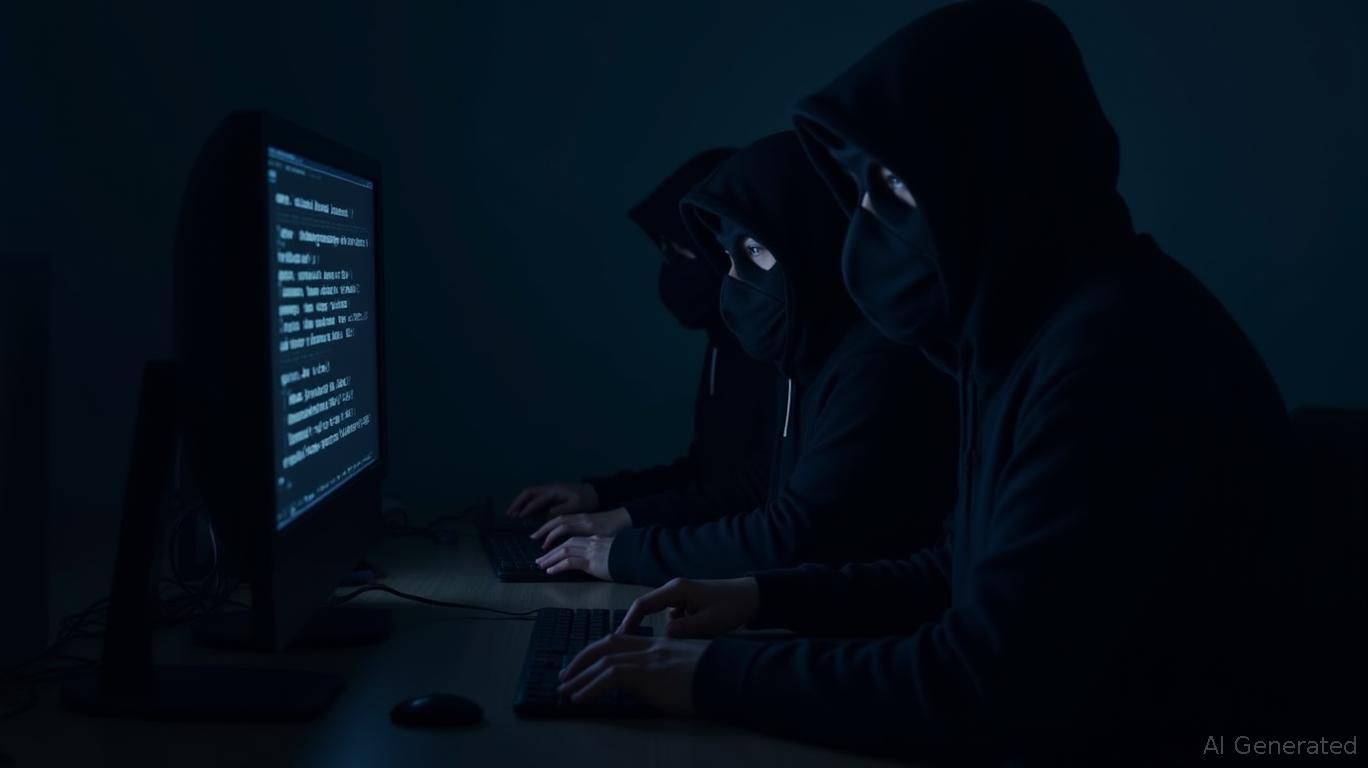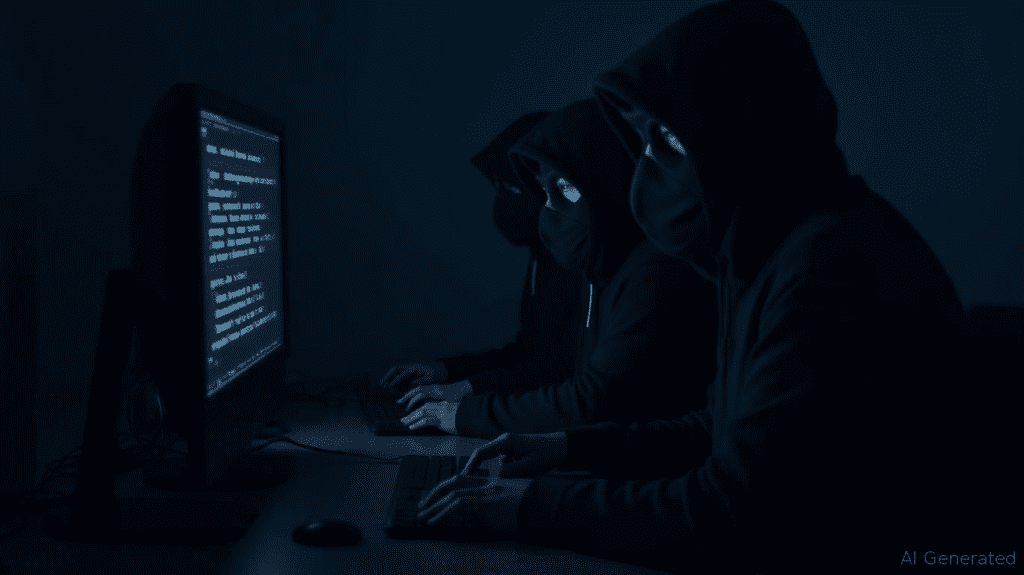The world of cryptocurrency, often celebrated for its innovation and decentralization, is faced with a significant and insidious threat: the infiltration sponsored by the state. The recent conclusions of the famous Zachxbt chain investigator have revealed a shocking scale of presumed North Korean pirates anchored in legitimate cryptographic societies in the world. This threat does not simply concern external attacks; This implies a deep risk of the interior, posing an unprecedented challenge to the very foundation of confidence and security in the space of digital assets.
Zachxbt’s meticulous survey suggests that a staggered 345 to 920 people, supposed to be agents in North Korea, has succeeded in obtaining computer roles and development in the global cryptography landscape. These people are often positioned in critical roles, gaining initiate access to sensitive systems and proprietary information. The financial scale of this operation is also worrying, these siphoning infiltrators would have more than $ 16.5 million in wages, a significant sum which probably supplies the illicit activities of the North Korean regime. Many agents would occupy several jobs simultaneously, maximizing their gains and amplifying their crucial access potential in initiates on various platforms, creating a network of vulnerabilities that are difficult to disentangle.
This systematic infiltration highlights critical vulnerability in hiring practices of many cryptographic companies. While the industry prides itself on its innovative mind, the rush towards the scale and the worldwide working nature inadvertently created a fertile terrain for these sophisticated actors and sponsored by the State. The ease with which these people can secure positions, often under false pretexts, underline an urgent need to reassess current security protocols.
The cryptocurrency sector, with its rapid transactions, its global scope and its pseudonym nature, presents an irresistible target for nation states under strict international sanctions. For groups like the infamous Lazare group, a cybercrime organization linked to North Korea, crypto is not only a digital asset; It is a life buoy. The funds acquired through hacks and infiltration would be channeled in the financing of weapons programs of mass destruction of the regime, making each successful violation a direct contribution to a dangerous global threat.
The appeal of cryptographic jobs for these agents is in several facets. Traditional financial systems are strongly regulated, which makes entities sanctioned difficult to move funds. Cryptocurrencies offer a less examined avenue. Decentralized financing protocols (DEFI), Crypto exchanges and projects often have large sums of digital assets, making it lucrative targets for theft. Obtaining a job in a crypto company provides direct pipeline to internal systems, private keys, intellectual property and user data, facilitating more sophisticated and damaging attacks than external hacking attempts. The nature distributed and often far from development and cryptographic operations allows agents to hide their real locations and identities more easily.
The growing frequency of challenge violations linked to North Korean entities highlights the seriousness of this threat. They are not only individual opportunistic hackers; They are part of a coordinated, well -funded and very motivated state apparatus. Their objective is not only a financial gain; It is the strategic acquisition of resources, which makes it a unique and dangerous opponent for the entire ecosystem of cryptography.
Although the sophistication of these infiltrators sponsored by the state is high, the results of Zachxbt stress that even the advanced threats are traced. One of the most critical dishes for cryptographic companies is the importance of vigilance and the ability to identify common red flags. Many of these agents, despite their technical skills, have inconsistencies which, if recognized, could prevent significant violations.
Current red flags that could help identify these infiltrators include incoherent digital fingerprints, poor performance at work in certain cases, working hours or unusual models, reluctance to commit visually, too much for sensitive access, suspicious network activity and social engineering attempts. The report also indicates that low KYC / AML practices (know your customer / anti-flask) in certain companies as a contributing factor. Although KYC / AML is often associated with financial transactions, a robust identity verification during the hiring process is also crucial. A lax approach creates an open door here so that malicious actors can walk directly.
The ideas for Zachxbt’s investigation serve as a striking warning but also a crucial appeal for action. Strengthening the security of cryptography no longer consists only of defending against external attacks; It requires a solid internal defense strategy. Cryptographic companies can take exploitable measures to mitigate the risk of infiltration by stakeholders sponsored by the State, including the implementation of improved history checks, the strengthening of KYC / AML during hiring, the adoption of a zero-frust safety model, the application of multi-factory audits (MFA), performing regular audits and penetration tests, providing training In terms of employees’ stay, departmental network training, monitoring of the deposit network and detection, residence training for AwressengnegnegenEDEGENEGEGEGEGEGEGEGEGEGE of tasks and access controls, developing a response plan for incidents and collaboration with safety experts and police.
The infiltration of North Korean pirates in cryptographic companies extends far beyond sole proprietorships. He throws a shadow over the whole industry, which has an impact on his reputation, his regulatory landscape and, ultimately, his consumer adoption. Each successful violation, whether by external attacks or a threat of initiates, erodes confidence. For an industry that thrives on confidence, it is an essential challenge. Regulators from around the world are already taking a closer look at the cryptographic space. The incidents involving actors sponsored by the State will undoubtedly lead to increased pressure for more strict compliance, more strict KYC / AML requirements and potentially new legislation aimed at strengthening cybersecurity within cryptographic companies. Although some members of the cryptographic community can resist increased regulation, a proactive security approach could demonstrate the commitment of the industry to self-government and responsible growth.
In addition, these threats hinder innovation. The resources that could be channeled in the development of revolutionary applications and technologies are rather diverted to the fight against sophisticated cyber war. Fear of infiltration can also dissuade talents and institutional investments, which hinders the overall maturation of the cryptographic ecosystem.
Zachxbt’s revolutionary survey on North Korean infiltration is a reminder that gives thought that the digital border is also a battlefield. The presence of hundreds of presumed North Korean agents within cryptographic companies highlights a deep and evolving threat. It is a clear signal that the industry must go beyond reactive measures and adopt a proactive and complete approach to the security of cryptography. The protection of the integrity of cryptographic space requires collective action. From robust hiring practices and continuous training for employees to advanced security protocols and international collaboration, each ecosystem entity has a role to play. By understanding group tactics such as the Lazare group and implementing rigorous defenses, we can build a more resilient and trustworthy digital future, protect not only assets, but the very promise of a decentralized finance of the insidious threat of cyber war sponsored by the state.



